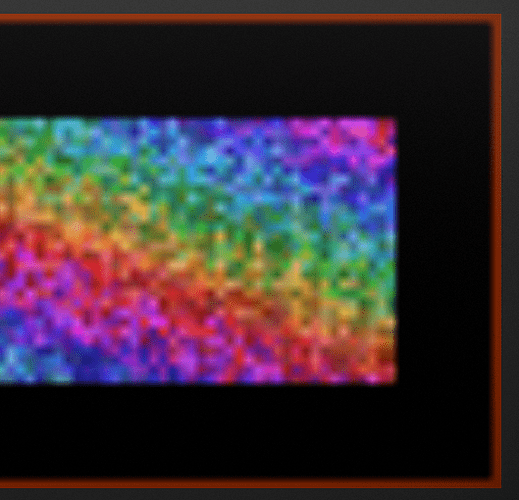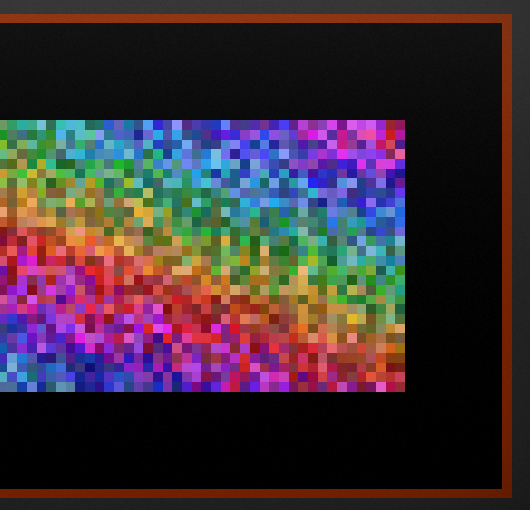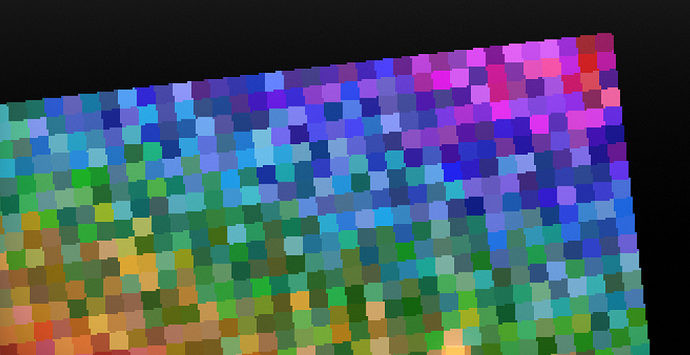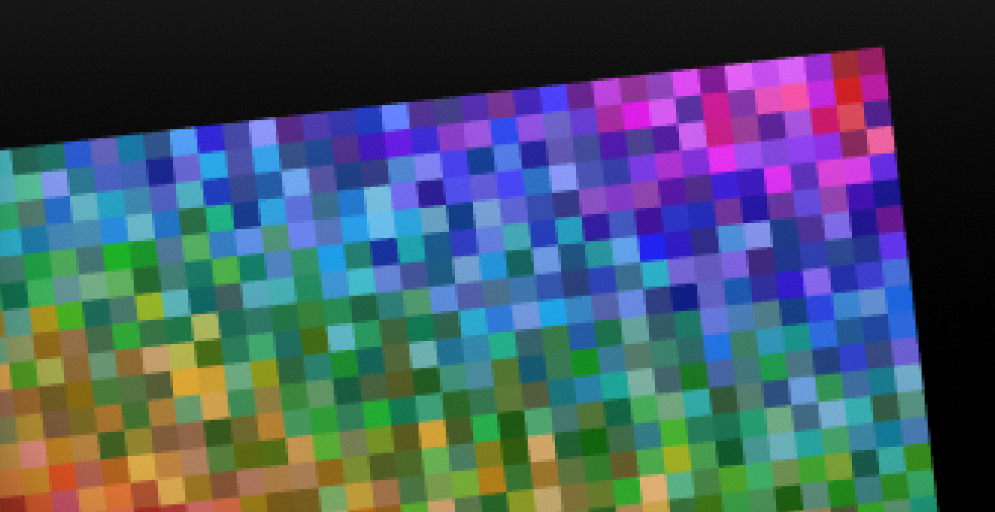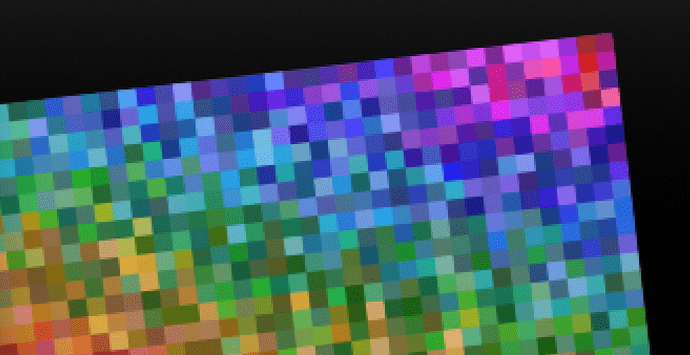taking a random texture like …

… zooming in alot …
… setting nearest filter …
… is good for a start but pretty useless when texels do not align perfectly with screen pixels, which is never happening
… things get ugly (zoomed to 33% resolution) :
a straight foward fix to that is using lots of msaa-samples and running sample-shading. very expensive thing to do, not fast, uses much memory, way too many samples evaluated but still … as a reference, this is nice ! 8x-msaa-sample-shading :
–
so here’s a shader i use for textures and screen-quads with distorted texture-coords to smooth out texels - fast, but not blurring like a linear-filter would do. no msaa used, result looks like :
there is no big difference to the 8x-msaa reference, actually it looks a bit smoother.
–
fragment shader :
#version 400
uniform sampler2D tex;
in vec2 st0;
out vec4 frag0;
vec4 textureLinearAA( const in sampler2D tex, const in vec2 st )
{
float miplevel = textureQueryLod(tex,st).y;
// minification (miplevel > 1.0) is best sampled by a standard linear sampler.
// switching to linear at > 0.0 would be faster but fading generates
// sharper pixels without many artifacts.
if(miplevel > 0.999) return texture2D(tex,st);
const float aa = 0.8; // 0.6 matches close to 8x-sample-shading. 0.0 = no AA
ivec2 tex_dim = textureSize(tex,0); // texture-dimension could be provided by uniforms for better speed
vec2 inv_tex_dim = 1.0 / tex_dim; // ^
vec2 fw = fwidth(st);
- vec2 fwtd = max(fw.x,fw.y)*tex_dim;
- float edge = min(min(fwtd.x, fwtd.y)*aa, 0.5);
+ vec2 edge = min( fw * tex_dim, vec2(0.5) );
vec2 dd = st.xy * tex_dim + 0.5;
vec2 p = vec2(floor(dd)*inv_tex_dim);
vec2 f = smoothstep(0.5 - edge,0.5 + edge, fract(dd));
// vec2 f = fract(dd);
// fract(dd) instead of smoothstep(fract(dd)) would look like a default linear-filter.
// might put that outside as well.
const ivec2 gatherOffsets[4] = ivec2[4]
(
ivec2(0,0), ivec2(1,0),
ivec2(0,1), ivec2(1,1)
);
vec4 _r = textureGatherOffsets(tex, p, gatherOffsets, 0);
vec4 _g = textureGatherOffsets(tex, p, gatherOffsets, 1);
vec4 _b = textureGatherOffsets(tex, p, gatherOffsets, 2);
vec4 _a = textureGatherOffsets(tex, p, gatherOffsets, 3);
vec4 _rgba = mix( mix( vec4(_r.x,_g.x,_b.x,_a.x),
vec4(_r.y,_g.y,_b.y,_a.y), f.x ),
mix( vec4(_r.z,_g.z,_b.z,_a.z),
vec4(_r.w,_g.w,_b.w,_a.w), f.x ), f.y );
// magnification
if(miplevel < 0.0001) return _rgba;
// mix of antialiased baselevel and next linear-filtered miplevel.
return mix( _rgba, texture2D ( tex, st ), miplevel);
}
void main(void)
{
frag0 = textureLinearAA(tex,st0);
}
pretty much a drop-in replacement for [icode]texture(tex, st)[/icode]. changing it from RGBA to RGB (and saving some gpu-power) should be straight forward. if you have any suggestions or improvements - i’d love to know 
there is just one thing to take care of, since this is a magnification filter, it uses a default texture(tex, st) lookup when scaling down. so even if the effect it nearest-filter-like you should set the samplers to linear-filtering.
that way things stay smooth when scaling down and crisp when scaling up.
o/

